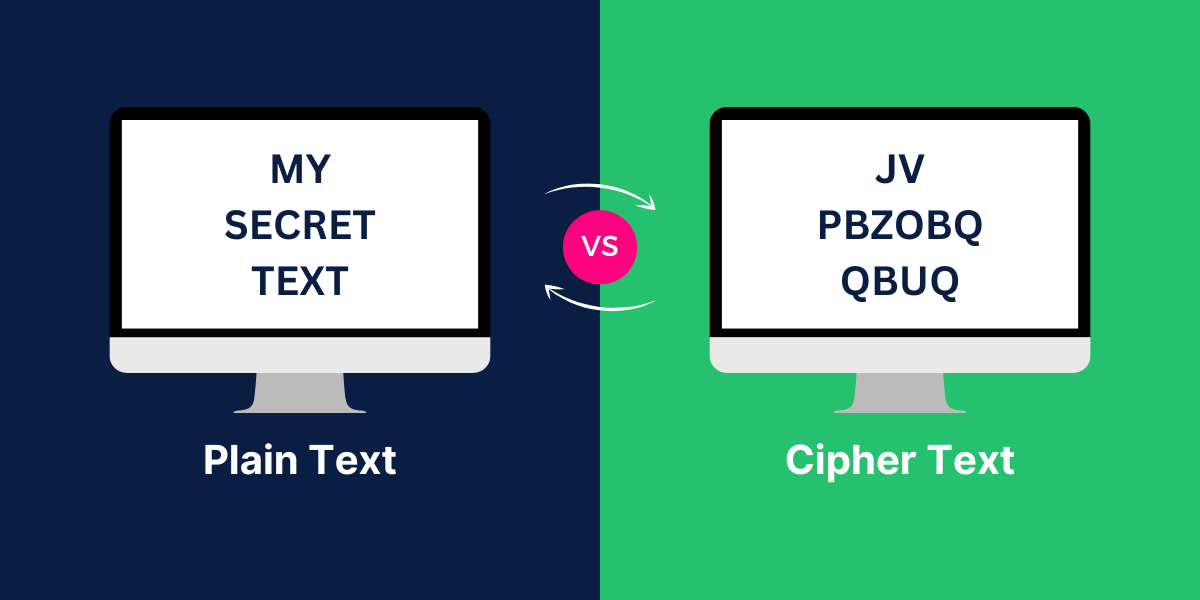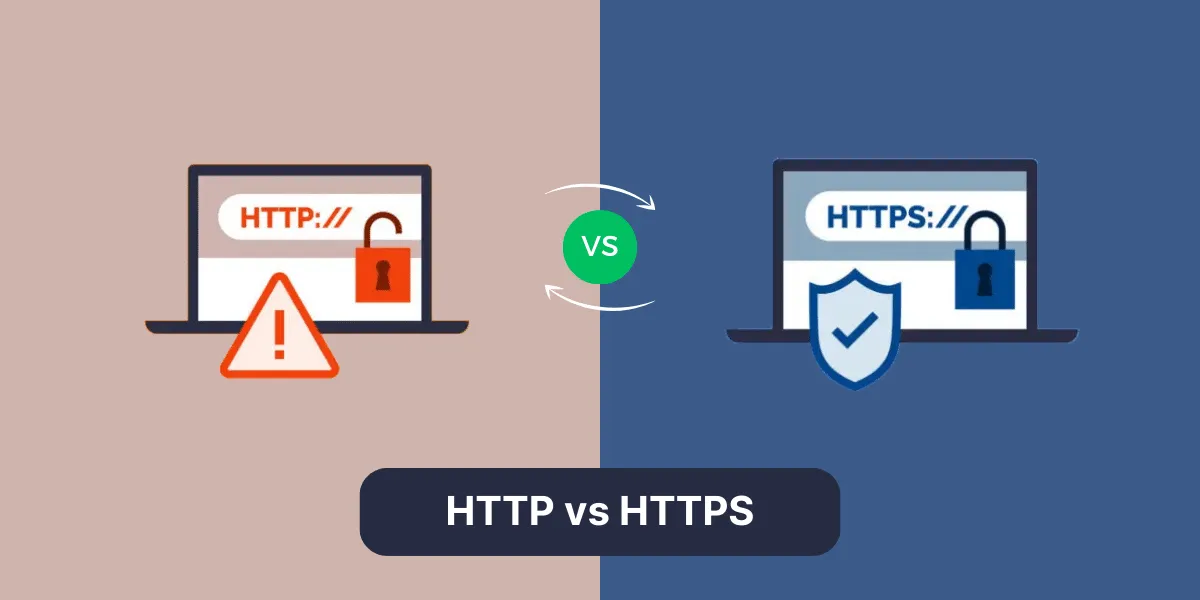What are the Differences Between Plaintext and Ciphertext?
The concepts of plaintext and ciphertext are fundamental in the field of cryptography and cybersecurity. Plaintext vs Ciphertext refers to the data before and after encryption, respectively. Encryption is the process of converting plaintext into ciphertext using a secret key and algorithm. Decryption then reverses this process, transforming the ciphertext back into the original plaintext with the same key.
Understanding the relationship between plaintext and ciphertext provides vital insight into how encryption works to protect confidential data. Examining how they interact through different encryption schemes also reveals why strong encryption is essential in the modern digital world.
Key Takeaways
- Plaintext is the original unmodified text or data before encryption. The ciphertext is the encrypted text or data after encryption.
- Encryption algorithms convert plaintext into ciphertext using a secret key, and decryption algorithms convert ciphertext back into plaintext using the same secret key.
- Plaintext and ciphertext interact through encryption and decryption. The plaintext is input to encryption algorithms, which produce ciphertext as output. The ciphertext is input to decryption algorithms, which reproduce the original plaintext.
- Symmetric encryption uses the same secret key for encryption and decryption. Asymmetric encryption uses a public key for encryption and a private key for decryption.
- Common symmetric algorithms include AES, Blowfish, RC4, DES, and 3DES. RSA and ECC are widely used asymmetric algorithms.
- Hashing algorithms like MD5, SHA-1, and SHA-256 are used to generate fixed-length hashes of plaintext. Hashes are one-way functions; plaintext cannot be derived from hashes.
- Ciphertext aims to conceal the meaning and content of plaintext. It should appear random and not indicate the original plaintext.
Head to Head Comparison Between Signed Driver vs Unsigned Driver
| Feature | Signed Drivers | Unsigned Drivers |
| Publisher Authentication | Verified with digital signature | Anonymous, no authentication |
| Tamper Protection | Hash check prevents code changes | Easily modified without detection |
| Security Risk | Lower, signature enforced | Higher, no verification |
| Compatibility Testing | Extensive WHQL testing required | No compatibility requirements |
| Reliability Testing | Stability and quality validated | No reliability testing or standards |
| Enterprise Features | Supports management and services | May lack business-critical capabilities |
| Mainstream Support | Compatible with common hardware | Focuses on niche/proprietary devices |
| Approval Delay | Signing process adds months | Can distribute immediately |
| Experimental Options | Only approved features allowed | Unregulated access to new features |
| Customization Potential | Standardized APIs limit control | Unlocked low-level and undocumented tuning |
| User Control | Requires override to install | Default-blocked by Windows |
| Technical Support | Backed by Microsoft and OEMs | Limited to forums and communities |
What is Plaintext?
Plaintext refers to any data or text in its original unmodified form before encryption. It can consist of characters, numbers, symbols, images, audio, video, or any digital data.
Some examples of plaintext include:
- An email or text document
- A database file or spreadsheet
- Media files like photos, music, video
- Confidential corporate files and records
Plaintext data may have some inherent structure, but the content is readable and understandable to humans or computer systems without any special processing.
What is Ciphertext?
Ciphertext is the result after plaintext has been encrypted through an algorithm using a secret key. It consists of a scrambled version of the original plaintext that is unreadable until decrypted.
The encryption process converts the plaintext to ciphertext for secure transmission or storage. The ciphertext looks like a random sequence of characters, hiding the original semantic meaning.
Ciphertext is the encrypted output produced by encryption algorithms after inputting the plaintext and secret key. It may include numbers, letters, symbols, spaces, and other characters that do not directly reflect the plaintext.
The same plaintext will produce different ciphertext depending on the algorithm and secret key used. However, the ciphertext can always be reversed to the original plaintext by decrypting it using the same key.
Key Differences Between Plaintext vs Ciphertext
The main differences between plaintext and ciphertext are:
- Readability: Plaintext is readable and understandable. The ciphertext is unreadable and appears random.
- Data Format: Plaintext data retains its original native format. Ciphertext has a scrambled format.
- Security: Plaintext contains sensitive information. Ciphertext secures the data through encryption.
- Encryption Status: Plaintext is before encryption. Ciphertext is after encryption.
- Accessibility: Plaintext can be directly read. Ciphertext requires decryption first.
How Plaintext and Ciphertext Interact through Encryption/Decryption
Plaintext and ciphertext interact through the twin processes of encryption and decryption.
Let’s examine how they work at a high level:
Encryption
Encryption algorithms take plaintext and a secret key as input to output ciphertext. The secret key controls the encryption, ensuring only authorized parties can reverse the process.
During encryption, the plaintext data is transformed using the algorithm and mappings defined by the secret key. This obscures the original data, producing ciphertext that appears random.
The encryption operation converts plaintext (P) into ciphertext (C) using the secret key (K): Encrypt(P, K) → C
The ciphertext output conceals the original content. The secret key is required later to decrypt the data.
Decryption
Decryption performs the inverse operation, recovering the plaintext from ciphertext using the secret key. The same key that was used to encrypt is needed to decrypt correctly.
The decryption algorithm applies the inverse mappings defined by the key to decode the ciphertext back into the original plaintext.
Mathematically, decryption converts ciphertext (C) back into plaintext (P) using the secret key (K): Decrypt(C, K) → P
When the same key is used, the original plaintext content is reproduced exactly.
Overview of Symmetric and Asymmetric Encryption
There are two fundamental architectures for encryption algorithms based on how they use secret keys:
Symmetric Encryption
Symmetric algorithms use the same secret key for both encryption and decryption operations. This requires the sender and recipient to have the same key for secure communication.
AES, Blowfish, RC4, DES, and 3DES are examples of symmetric encryption. These operate very quickly and efficiently in hardware.
Symmetric encryption can be represented as: Encrypt(P, K1) → C Decrypt(C, K1) → P
The secret key (K1) encrypts the plaintext and also decrypts the ciphertext.
Asymmetric Encryption
Asymmetric encryption uses different keys for encryption and decryption. There is a public key for encrypting and a private key for decrypting.
Widely used asymmetric algorithms include RSA and ECC (elliptic curve cryptography). These are based on mathematical problems that are easy one way but very hard to reverse.
Asymmetric encryption involves: Encrypt(P, Kpublic) → C Decrypt(C, Kprivate) → P
The public key encrypts the plaintext into ciphertext. The private key is required to decrypt the ciphertext. This doesn’t require exchanging secret keys.
Ciphertext Security
A key goal of encryption is to produce ciphertext that conceals the original plaintext as much as possible. Properly encrypted ciphertext should appear meaningless, with no patterns or structure indicating what the plaintext was.
Some principles for maximizing ciphertext security include:
- Indistinguishability: Ciphertexts for any two plaintexts should be indistinguishable from each other.
- Non-malleability: It should be infeasible to manipulate or alter the ciphertext in a meaningful way.
- Non-reusable: A ciphertext should only be usable once and be unreadable after decryption.
- Resistance to Known Plaintext Attack: Even if some plaintext/ciphertext pairs are known, others should remain secure.
- Key Sensitivity: Small changes in the key should drastically alter the ciphertext.
- Randomness: The ciphertext should appear random and exhibit high entropy.
Modes of Operation
Encryption algorithms are typically used with various modes of operation that specify how plaintext is encrypted into blocks of ciphertext.
Common modes include:
- ECB: Electronic Codebook mode encrypts fixed-size blocks independently using the key.
- CBC: Cipher Block Chaining mode chains blocks together such that each ciphertext block depends on all plaintext blocks.
- CFB: Cipher Feedback mode emits ciphertext in small portions while chaining them together with previous ciphertext blocks.
- OFB: Output Feedback mode repeatedly encrypts an initialization vector to create a keystream that is XORed with plaintext to generate the ciphertext.
- CTR: Counter mode uses sequential values as an input vector to create a keystream that encrypts the plaintext.
- GCM: Galois Counter Mode provides authenticated encryption by combining CTR mode with a special authentication tag.
Best Practices for Plaintext and Ciphertext
To most effectively leverage plaintext and ciphertext in securing data, keep these best practices in mind:
- Use strong standard encryption like AES or RSA rather than rolling your algorithm.
- Select appropriate key sizes, modes, initialization vectors, and padding schemes.
- Generate keys randomly using secure processes like key derivation functions.
- For asymmetric encryption, hybrid encryption is used to encrypt keys with RSA and data with symmetric ciphers.
- Properly manage, store, and exchange keys to prevent unauthorized access.
- Include authentication mechanisms with encryption to verify integrity and authenticity.
- Analyze ciphertext to detect weaknesses and ensure they appear random.
- Zeroize plaintext data when no longer needed against residual risks.
- Control access to ciphertext and decryption keys to prevent unauthorized decryption.
Final Thoughts
Plaintext refers to readable data before encryption, while ciphertext transforms the data into an unreadable encrypted form. They interact through encryption algorithms that convert plaintext to ciphertext and decryption algorithms that recover the plaintext.
Symmetric encryption uses the same key for both directions. Asymmetric encryption uses mathematically linked public and private key pairs. Hashing provides a one-way transformation to fixed-length values.
Ciphertext should conceal all patterns related to the underlying plaintext. Secure encryption algorithms and modes of operation, combined with proper key management, ensure strong protection for confidential data.
Understanding how plaintext interacts with ciphertext provides the foundation for leveraging encryption to secure sensitive information in modern systems.
Frequently Asked Questions
What is the main purpose of ciphertext?
The main purpose of ciphertext is to conceal the original plaintext data using encryption securely. It prevents unauthorized access to sensitive information.
Does the same plaintext always produce the same ciphertext?
No, encrypting the same plaintext multiple times will produce different ciphertext each time. This is due to randomized initialization vectors and other parameters.
Can AES be used for both encryption and decryption?
Yes, AES is a symmetric algorithm, so it uses the same key for both encryption to create ciphertext and decryption to recover the plaintext.
How are asymmetric encryption keys generated?
Asymmetric key pairs are mathematically generated using cryptographically secure random number generators and algorithms. The private key is kept secret, while the public key can be openly distributed.
What guarantees that the recipient has the correct secret key to decrypt the ciphertext?
Proper key management infrastructure and practices are necessary to securely exchange and validate secret keys before encryption. The sender must have assurance of the recipient’s ownership of the key.
What prevents someone from altering or tampering with ciphertext?
Cryptographic authentication mechanisms, such as hashed message authentication codes or digital signatures, can detect any changes made to ciphertext after encryption.
How does a hashed value provide data integrity verification?
Hashing the plaintext data and storing the hash allows for the detection of any modification of the data by recomputing the hash and comparing it to the original. If they differ, the data is altered.
What techniques help analyze and evaluate the security of ciphertext?
Techniques like entropy analysis, frequency distribution analysis, randomness testing, and known-plaintext attacks can help assess ciphertext characteristics and vulnerabilities.

Priya Mervana
 Verified Web Security Experts
Verified Web Security Experts
Priya Mervana is working at SSLInsights.com as a web security expert with over 10 years of experience writing about encryption, SSL certificates, and online privacy. She aims to make complex security topics easily understandable for everyday internet users.



